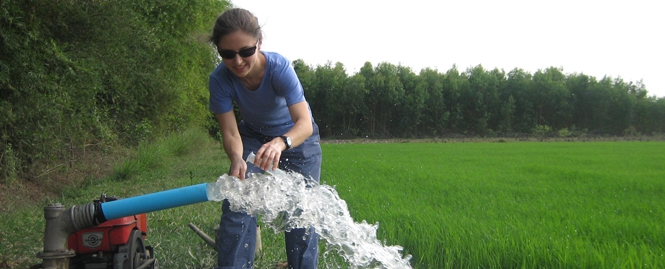Arsenic in Asia

In Southern Asia, an estimated 100 million people have been exposed to risks from groundwater contaminated with naturally occurring arsenic. The tainted water, used for drinking, agriculture and industry, has resulted in a variety of serious health problems, including cancer. GFI researchers are working to understand the extent and causes of the contamination, and to recommend precautions and solutions.
UPS Foundation support enabled us to travel to Vietnam where we acquired a massive dataset of groundwater arsenic concentrations. It showed far more deep contamination that had been recognized previously. NSF funding is enabled us to chemically analyze a core sample in the lab as well as continue to continue satellite image analysis and simulation studies.
GFI researchers explored a formerly unrecognized mechanism of arsenic contamination in which arsenic is released from clay compaction due to groundwater pumping. Deep aquifers in the Mekong Delta are extensively used for water supply, but the water pumped is contaminated with arsenic. The consequent land-subsidence due to pumping can be detected from space using satellite radar data.
Among our findings, drilling deeper wells – a common strategy in the search for clean water – may not provide arsenic-free water. Arsenic has been found in numerous deep wells drilled in the Mekong Delta region of southern Vietnam. Our research suggests that the contamination occurs as arsenic is squeezed from ancient clay sediments surrounding the wells in a heavily pumped region.